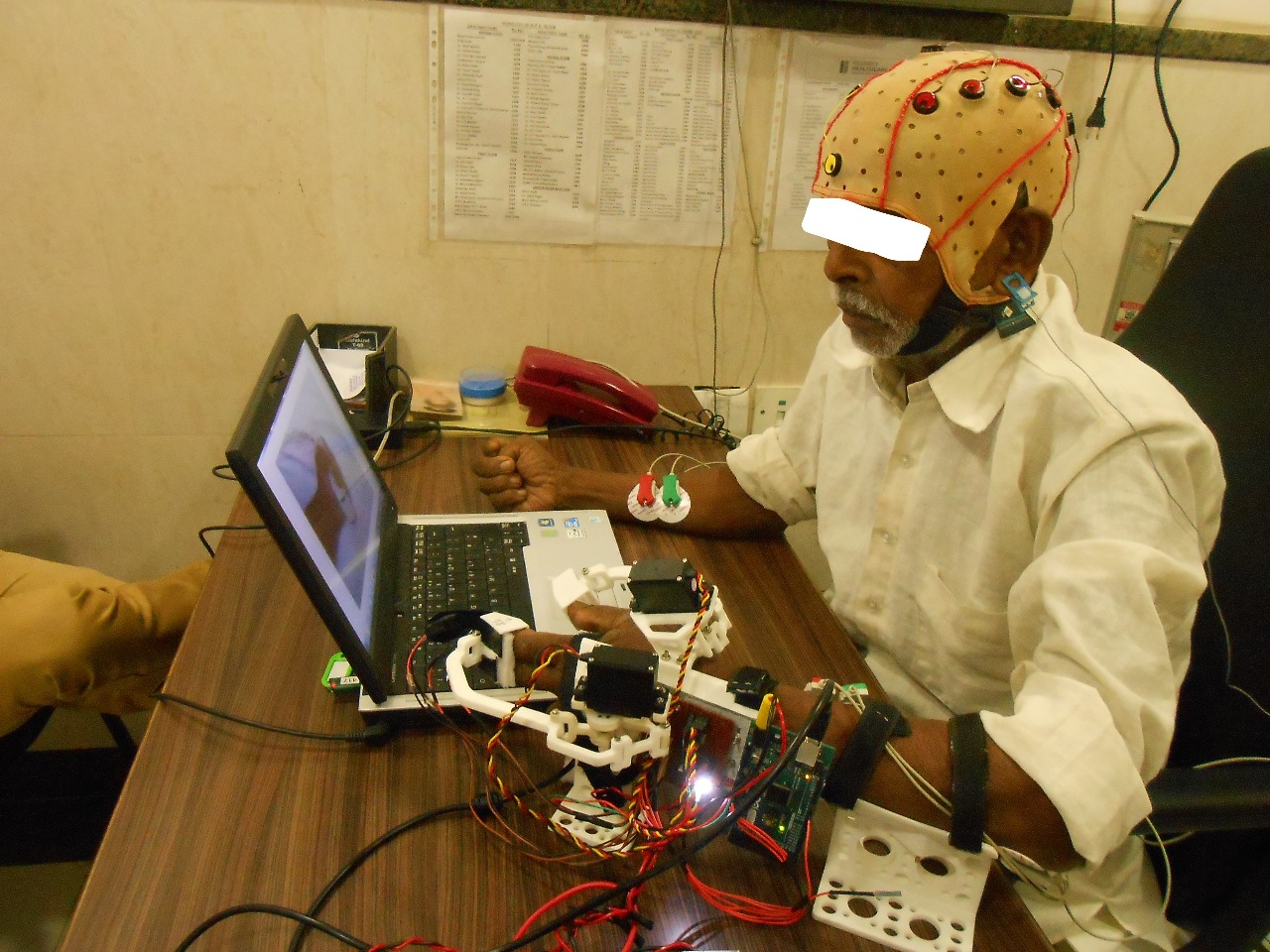Won't work for patients like me whose motor cortex for the fingers is dead.
Have your competent? doctor compare this to this previous one:
IIT-K develops world’s first robotic hand exoskeleton for stroke rehabilitation
This innovation is the result of 15 years of rigorous research

The Indian Institute of Technology Kanpur (IIT-K) has developed a first-of-its-kind Brain-Computer Interface (BCI)-based Robotic Hand Exoskeleton to transform stroke rehabilitation and redefine post-stroke therapy by accelerating recovery and enhancing patient outcomes.
This innovation is the result of 15 years of rigorous research by Prof. Ashish Dutta from the Department of Mechanical Engineering at IIT Kanpur, supported by Department of Science and Technology (DST), UK India Education and Research Initiative (UKIERI), and Indian Council of Medical Research (ICMR).
The BCI-based robotic hand exoskeleton employs a unique closed-loop control system that actively engages the patient’s brain during therapy. It integrates three essential components: a Brain-Computer Interface that captures EEG signals from the brain’s motor cortex to assess the patient’s intent to move, a robotic hand exoskeleton that performs therapeutic hand movements, and software that synchronizes brain signals with the exoskeleton for real-time assist-as-required force feedback. This synchronized approach ensures continuous engagement of the brain, fostering faster and more effective recovery.
Pilot clinical trials conducted in collaboration with Regency Hospital (India) and the University of Ulster (UK), have yielded exceptional results, showcasing the transformative potential of the Brain-Computer Interface (BCI)-based Robotic Hand Exoskeleton. Remarkably, eight patients—four in India and four in the UK—who had plateaued in their recovery one or two years post-stroke achieved complete recovery through this innovative therapy.
No comments:
Post a Comment